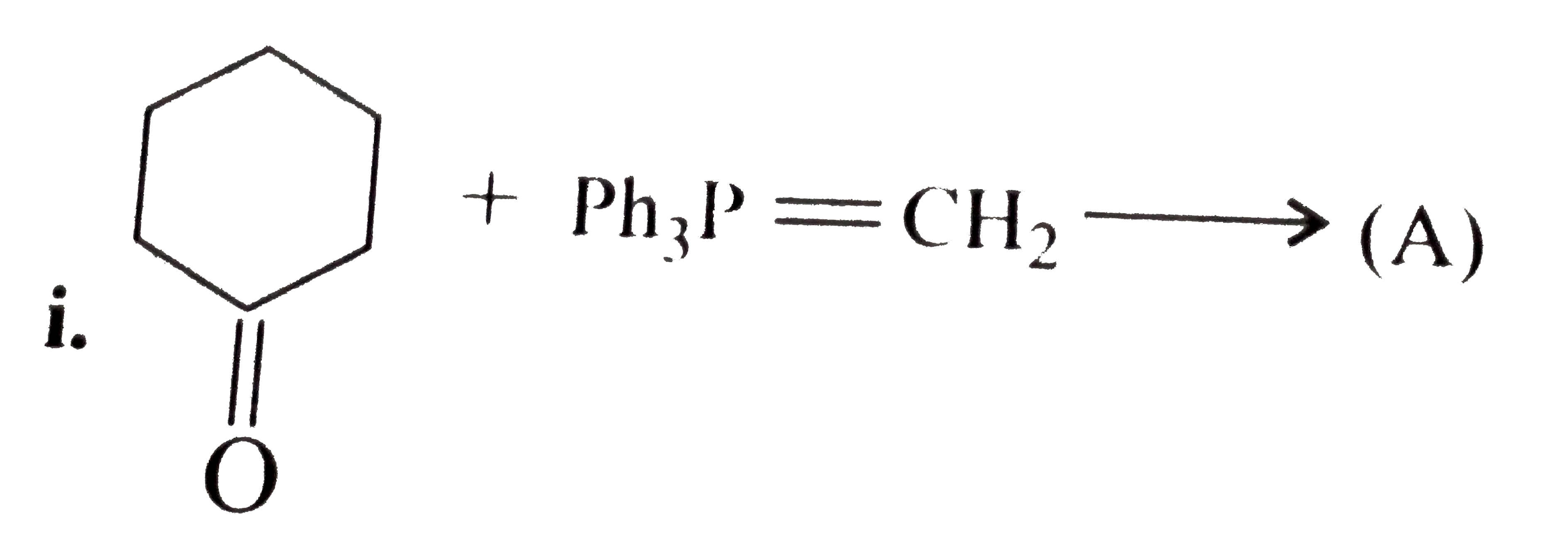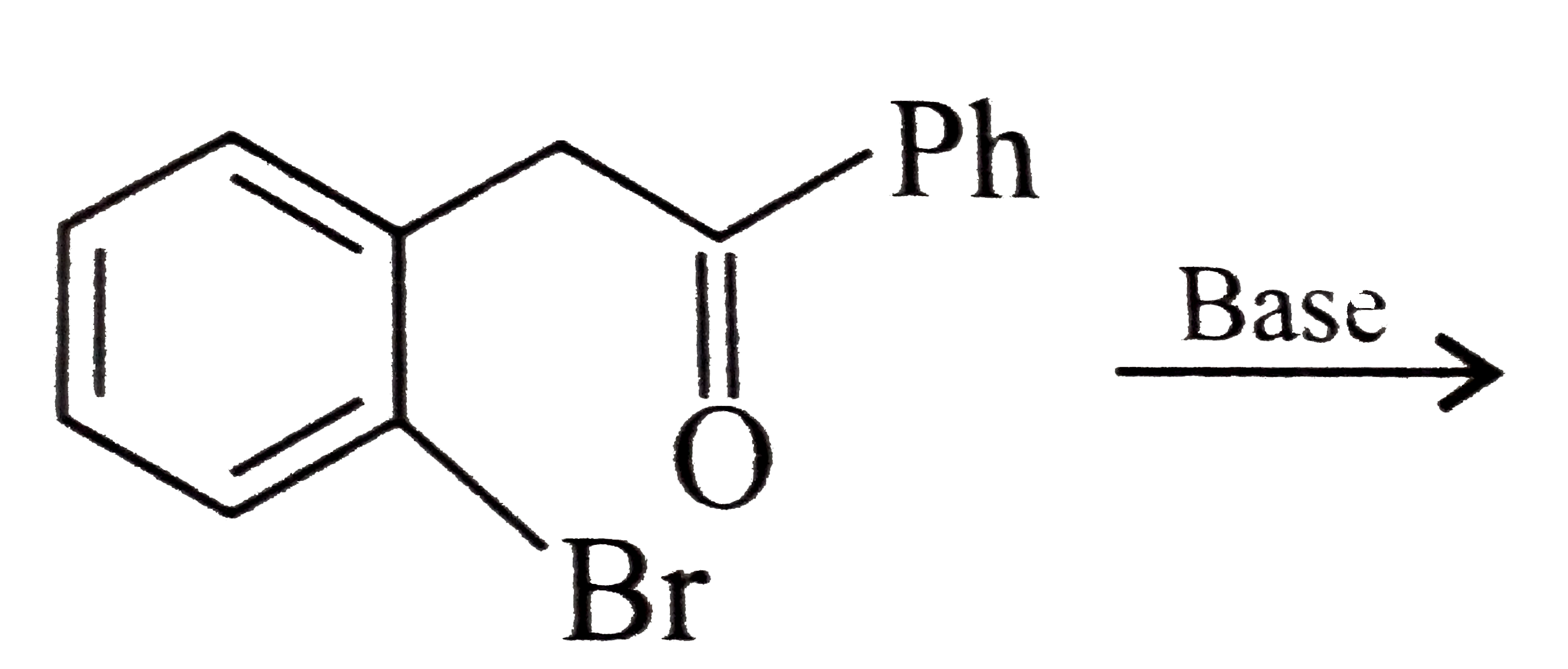Complete Solutions to Archives Subjective of chapter ALIPHATIC AND AROMATIC ALDEHYDES AND KETONES of Class 12 book with complete answers and questions
| Class 12 | CHEMISTRY |
| Chapter | ALIPHATIC AND AROMATIC ALDEHYDES AND KETONES |
| CENGAGE CHEMISTRY | Archives Subjective |
| Number Of Questions | 29 |
| Academic Year | 2023-24 |
Write the structural formula of the main organic product formed when methanal reacts with ammonia.
01:52View SolutionOutline the reaction sequence for the conversion of methanal to ethanal (the number of steps should not be more than three).
02:09View SolutionShow with balanced equation what happens when the following are mixed: 'Chloral is heated with aqueous hydroxide.'
02:35View SolutionWrite down the reactions involved in the preparation of the following using the reagents indicated in parenthesis: 'Acetoxime from acetaldehyde'.
`[K_(2)Cr_(2)O_(7)//H^(+), Ca(OH)_(2)`, and `NH_(2)OH.HCl]`02:20View SolutionArrange the following in the order of their incresing reactivity towards HCN:
`CH_(3)CHO, CH_(3)COCH_(3), HCHO, C_(2)H_(5)COCH_(3)`05:02View SolutionWrite down the main product of the following reaction. Propanal `overset(NaOH)underset(heat)rarr`
03:47View SolutionGive reasons in one or two sentances for the following: 'Hydrazones of aldehydes and ketones are not prepared in highly acidic medium'.
03:42View SolutionIn what manner the following transformation might be carried out (in not more than six steps) ? 'Benzaldehyde to cyanobenzene'
02:03View SolutionComplete the following with appropriate structures.
 04:38View Solution
04:38View SolutionCompound (A) `(C_(6)H_(12)O_(2))` on reduction with `LiAlH_(4)` yielded two compounds (B) and (C ). The compound (B) on oxidation gave (D), which on treatment with aqueous alkail and subsequent heating furnished (E ). The latter on catalytic hydrogenation gave (C ). The compound (D) was oxidised further to give (F) which was found to be a monobasic acid (molecular formula weight `= 60.0`). Deduce the structures of (A), (B), (C ), (D), and (E ).
07:35View SolutionArrange the following in the increasing order of expected enol content.
i. `CH_(3)COCH_(2)CHO`
ii. `CH_(3)COCH_(3)`
iii. `CH_(3)CHO`
iv. `CH_(3)COCH_(2)COCH_(3)`03:53View SolutionWrite the structure of major organic product expected from the following reaction.
 05:12View Solution
05:12View SolutionHow will you bring about the following conversions ? '4-nitrobenzaldehyde from benzene'
03:42View SolutionComplete the following reaction with appropriate structure.
`C_(6)H_(5)-CHO+CH_(3)-COOC_(2)H_(5)overset(NaOC_(2)H_(5)"in absolute")underset(C_(2)H_(5)OH "and heat")rarr` (A)04:19View SolutionComplete the following reaction with appropriate structure:
 02:41View Solution
02:41View SolutionSuggest appropriate structure of the missing compounds. (The number of carbon atoms remains the same throughout the reaction.)
 05:58View Solution
05:58View SolutionComplete the following, giving the structures of principal organic products.
i.
ii.
`ClCH_(2)CH_(2)CH_(2)COPh+KOH+MeOH rarr (C )`05:25View SolutionAcetophenone on reaction with hydroxyl amine hydrochloride can produce two isomeric oximes. Write the structures of the oxime.
03:54View SolutionAn aldehyde (A) `(C_(11)H_(8)O)`, which does not undergo self aldol condensation, gives benzaldehyde and 2 mol of (B) on ozonolysis. Compound (B) on oxidation with silver ion gives oxalic acid. Identify the compounds (A) and (B).
04:59View SolutionComplete the following reactions with appropriate structures of products/reagents.
 View Solution
View SolutionCompound (A) `(C_(8)H_(8)O)` on treatment with `NH_(2)OH.HCl` gives (B) and (C ). (B) and (C ) rearrange to give (D) and E, respectively, on treatment with acid. (B), (C ), (D), and (E ) are all isomers of molecular formula `(C_(8)H_(9)NO)`. When (D) is boiled with alcoholic KOH, an oil (F) `(C_(6)H_(7)N)` separates out. (F) reacts rapidly with `CH_(3)COCl` to give back (D). On the other hand, (E ) on boiling with alkali followed by acidification gives a white solid (G) `(C_(7)H_(6)O_(2))`. Identify (A) to (G).
10:41View Solutiono-Hydroxy benzaldehyde is more soluble in water than p-hybroxy benzaldehde
(b) o-Hydroxy benzaldehyde is liquid at room temperature while p-hydroxy benzaldehyde is high melting solid .04:52View SolutionCarry out the following transformation in not more than three steps.
`CH_(3)-CH_(2)-C-=C-H rarr`
`CH_(3)-CH_(2)-CH_(2)-overset(O)overset(||)C-CH_(3)`02:15View SolutionWhat would be the major product in the following reaction ?
 03:31View Solution
03:31View SolutionAn organic compound (A) `(C_(6)H_(10)O)` on reaction with `CH_(3)MgBr` followed by acid treatment gives compound (B). The compound (B) on ozonolysis gives compound (C ), which in the presence of a base gives 1-acetyl cyclopentane (D). The compound (B) on reaction with HBr gives compound (E ). Write the structures of (A), (B), (C ), (D), and (E ). Show how (D) is formed from (C ).
12:39View SolutionIdentify (A), (B), (C ), (D), and (E ) in the following reactions and write their structures.
 `overset(Br_(2)//C CI_(4))rarr` (A) `overset(NaNH_(2))rarr` (B) `overset(HgSO_(4))underset(H_(2)SO_(4))rarr` (C )
`overset(Br_(2)//C CI_(4))rarr` (A) `overset(NaNH_(2))rarr` (B) `overset(HgSO_(4))underset(H_(2)SO_(4))rarr` (C )
`(C )overset(NH_(2)NHCONH_(2))rarr(D)`
`(C )overset(NaOD//D_(2)O("Excess"))rarr(E )`06:39View Solution`(C_(6)H_(12))overset(HCl)rarr underset((C_(6)H_(13)Cl))(B)+(C )`
`(B)overset(Alc.KOH)rarr(D)` [isomer of (A)]
`(D)overset("Ozonolysis")rarr(E )` (It gives negative test with Fehling's solution but responds to iodoform test)
`(A)overset("Ozonolysis)rarr(F)+(G)` (Both give positive Tollens test but do not give iodoform test)
`(F)+(G)overset("Conc.NaOH)rarr HCOONa` + A primary alcohol .
Identify A to G.09:44View Solution
Identify (A) to (D).07:38View Solution
Identify (X) and (Y).05:54View Solution
Archives Subjective questions and complete solutions for chapter ALIPHATIC AND AROMATIC ALDEHYDES AND KETONES of CENGAGE CHEMISTRY (HINGLISH) of Class 12
All Exercises from CENGAGE CHEMISTRY Class 12 CHEMISTRY ALIPHATIC AND AROMATIC ALDEHYDES AND KETONES
- Archives Fill In Theblanks
- Archives Linked Comprehension
- Archives Multiple Correct
- Archives Objective
- Archives Subjective
- Archives True And False
- Exercises Assertion-Reasoning
- Exercises Concept Application
- Exercises Linked Comprehension
- Exercises Multiple Correct
- Exercises Single Correct
- Exercises Subjective
- Illustration
- Solved Examples
